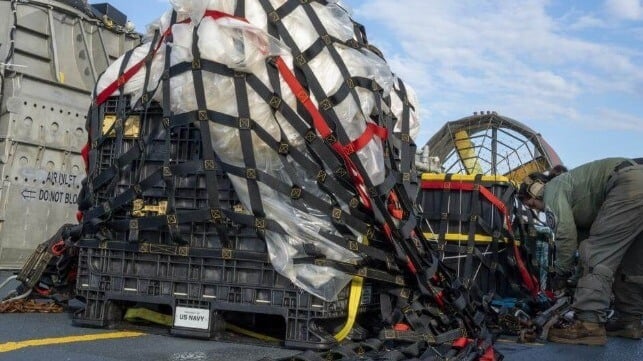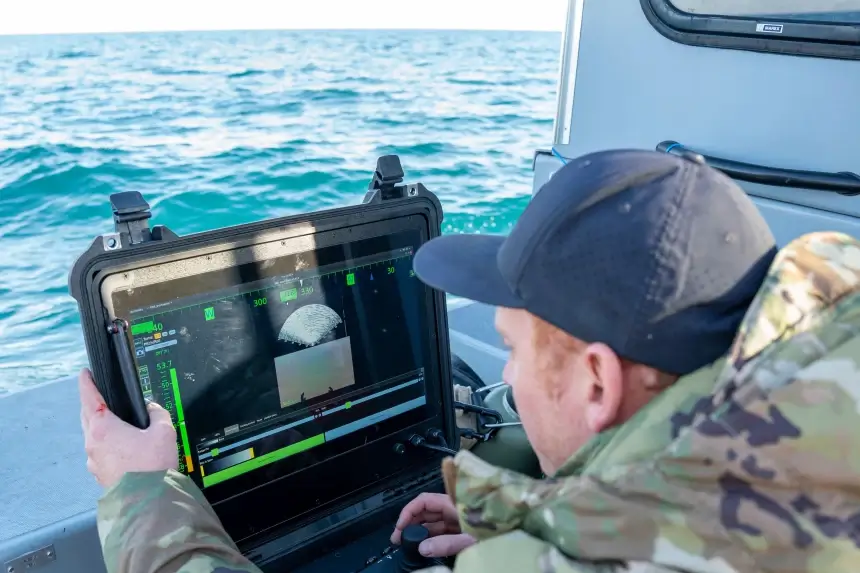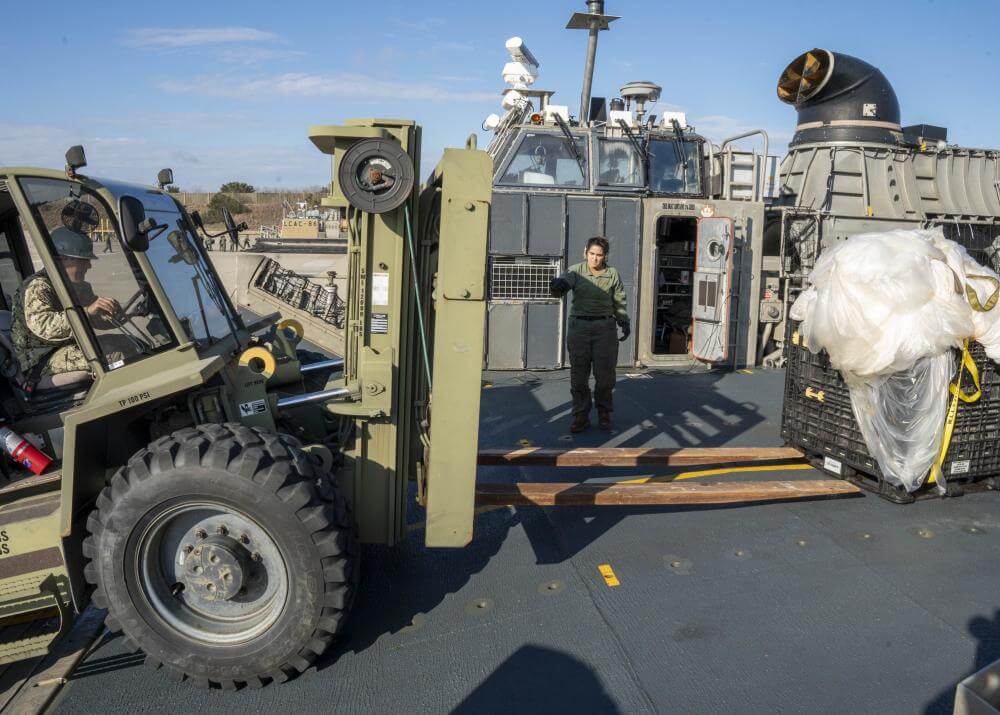U.S. Forces Recover Large Section of Chinese Surveillance Balloon

U.S. forces have recovered a large section of the Chinese surveillance balloon that the U.S. Air Force shot down off the coast of Myrtle Beach, South Carolina on February 4.
On Tuesday, defense officials told multiple media outlets that salvors found and brought up a 30-foot section of the balloon's payload structure. The forensic team has removed sensors, electronics and antennas from the wreckage for analysis.
According to U.S. Northern Command, the search team found "all of the priority sensor and electronics pieces identified" from the craft. The FBI is examining the components for clues to the balloon's origins and capabilities.

A U.S. Navy sailor looks for balloon debris on the bottom using an underwater vehicle (USN)

As of Tuesday, the amphib USS Carter Hall and the chartered OSV HOS Rosebud are still operating off Myrtle Beach in the debris recovery zone, according to AIS data provided by Pole Star.
Before it was shot down, the balloon made a full transit of the United States from the Intermountain West to the Southeast, flying at a height of about 60,000 feet. According to officials, it crossed over Montana and passed near to Malmstrom Air Force Base, a strategic launch site for nuclear-armed intercontinental ballistic missiles. While a balloon might sound like a small craft, AP reports that the object was about the size of three city buses.
While the exact capabilities of the balloon are under investigation, U.S. officials say that flybys conducted by U-2 surveillance planes during its flight found that its design was consistent with a signals intelligence collection mission.
The Pentagon and the White House assert that the balloon is part of a Chinese intelligence-gathering operation that has targeted over 40 countries on five continents.
"We were able to determine that China has a high-altitude balloon program for intelligence collection that's connected to the People's Liberation Army. It was operating during the previous administration, but they did not detect it," said National Security Council spokesman John Kirby on Monday. "We know that these [Chinese] surveillance balloons have crossed over dozens of countries on multiple continents around the world, including some of our closest allies and partners."
The Chinese government asserts that the craft was a weather balloon that drifted off course, and it objected strenuously to the U.S. decision to shoot it down. China has countered with allegations that American intelligence agencies operate a similar surveillance balloon program, noting the United States' long history of technical intelligence collection operations - including Project Genetrix, the American balloon surveillance initiative that targeted the Soviet Union (with mixed results).
The concept may not be entirely out of date. In 2022, two former U.S. defense officials proposed a notional high-altitude balloon system for over-the-horizon battlespace communications in the Western Pacific. The proposed network of airborne platforms would supplement comms satellites using unmanned aircraft and steerable stratospheric balloons, providing backup line of sight connectivity in the event of an anti-satellite attack.
